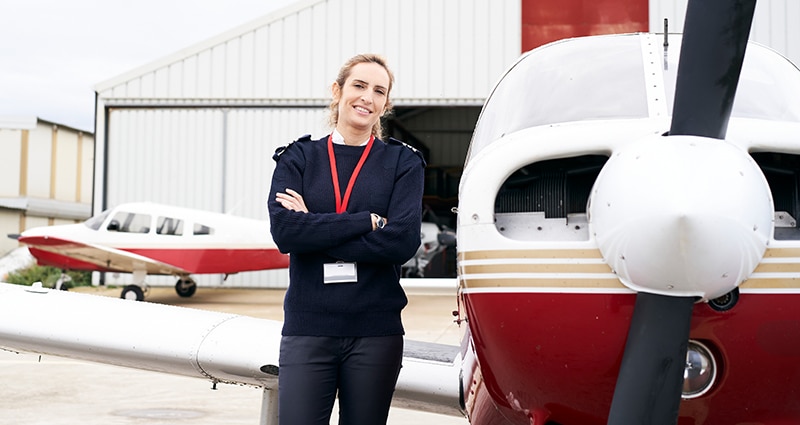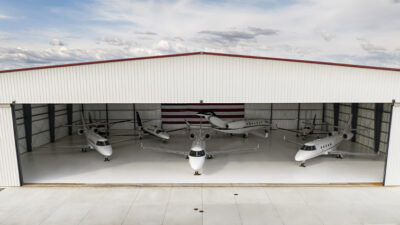Training Program Changes for 2022

As we move into the new year, it is a good time to analyze your training program for changes within your operation, updates needed to training content, and to address the latest industry trends. Your safety management system (SMS) is a good place to start to consider whether changes to your training program are needed for 2022.
Review your company safety risk profile. Are there any new hazards and associated risks identified that can be mitigated with training to ensure you keep the level of risk as low as is reasonably practical?
For example, ground damage to aircraft continues to be a top insurance claim and a problem that can result in aircraft down time, increased premiums, and costs for deductibles. How are you training everyone that comes in contact with your aircraft on the leading causal factor for ground damage—failure to follow procedures?
How are you doing on your safety performance indicators (SPIs) in pursuit of your overall safety goals? Can adjustments be made to your training program to meet your SPIs?
Finally, were there any hazard reports that highlight opportunities to improve your training program?
Industry Trends
- Loss of Control In-Flight (LOC-I) continues to be the number one fatal accident type. Does your training program adequately address this hazard? An integrated program that includes academics as well as on-aircraft and simulator training is the gold standard for upset prevention and recovery training (UPRT). Evaluate your training for the quality and experience of the instructors. With the current demand for pilots, Part 142 training centers are challenged in finding and retaining instructors. Look for programs that are aligned with the training best practices recommended by the International Civil Aviation Organization (ICAO), European Aviation Safety Agency (EASA), and the Federal Aviation Administration (FAA). The National Business Aviation Association (NBAA) has a LOC-I resources web page to help you refine your UPRT training program.
- Runway Excursions continue to be the number one incident type and in the top three for accident types. In 2021, there was a 25% increase in business aviation runway excursions in the United States over the past 3-year average rate. To address what needs to change to reduce this trend, the Flight Safety Foundation (FSF) published the Global Action Plan for the Prevention of Runway Excursions (GAPPRE). The GAPPRE includes 101 recommendations organized by group for airport operators, air navigation service providers, aircraft operators, aircraft manufacturers, regulators, and researchers. Within the GAPPRE, there are over 25 recommendations for training elements to include in a comprehensive runway excursion training program. How does your runway excursion training measure up to the recommendations?
- Controlled Flight Into Terrain (CFIT) is also in the top three for accident types. The NBAA Safety Committee has formed a working group to address the threat of CFIT. Look for products from this working group in 2022. In the meantime, the FSF toolkit for CFIT reduction is a good resource.
- The applicability of Dangerous Goods training is often misunderstood. In the United States, the Hazardous Materials Regulations (HMRs) are published by the Department of Transportation (DOT). Once you cross the U.S. border, the International Air Transport Association (IATA) Dangerous Goods Regulations apply. The 63rd edition of the Dangerous Goods Regulations includes provisions on competency-based training and assessment (CBTA). The HMRs apply to aircraft operating “in commerce.” The definition of in commerce is not the same as the FAA definition of an air carrier. In this context, it includes any aircraft owner that pays any pilot to operate the aircraft. Or, if you own and fly an airplane and put your employees onboard to fly it in furtherance of the business, you are in commerce and the HMRs apply to you. That means you must train on recognition of hazardous materials even if you don’t carry any. In 2021, the DOT Chart 17 was published, and your training will need to be updated to include this resource.
Train Smarter
Make it a goal to train smarter in 2022. How does your training program measure up to that of your peers? Are you effectively managing risk and listening to your safety management system?
Start by benchmarking your training program for the top three risks: LOC-I, runway excursions and CFIT. Then, audit your training content by asking your training vendor if updates have been made for DOT Chart 17 and GAPPRE recommendations.
 Advanced Aircrew Academy
Advanced Aircrew AcademyAdvanced Aircrew Academy enables flight operations to fulfill their training needs in the most efficient and affordable way—in any location at any time. We do this by providing high quality professional pilot, flight/cabin attendant, flight coordinator, maintenance, and line service training modules delivered via the web using a world class online aviation training system.
https://www.aircrewacademy.com/
© 2025 Advanced Aircrew Academy. All Rights Reserved.
Next ArticleRelated Posts

Emerging Security Threats in Business Aviation: Activism and Down-Route Risks
Security incidents affecting business aviation do not need to involve violence to have an operational impact. A protest delaying crew movements, blocking access to a hangar or resulting in an unauthorized photograph of a sensitive client can all trigger reputational, financial or compliance concerns for operators.

Navigating Geopolitical Uncertainty Using Business Aviation
Bigger business jets mean bigger fuel tanks, longer trips, more border crossings, and bigger wallets! With an equipment upgrade also comes the requirement for a knowledge upgrade.

